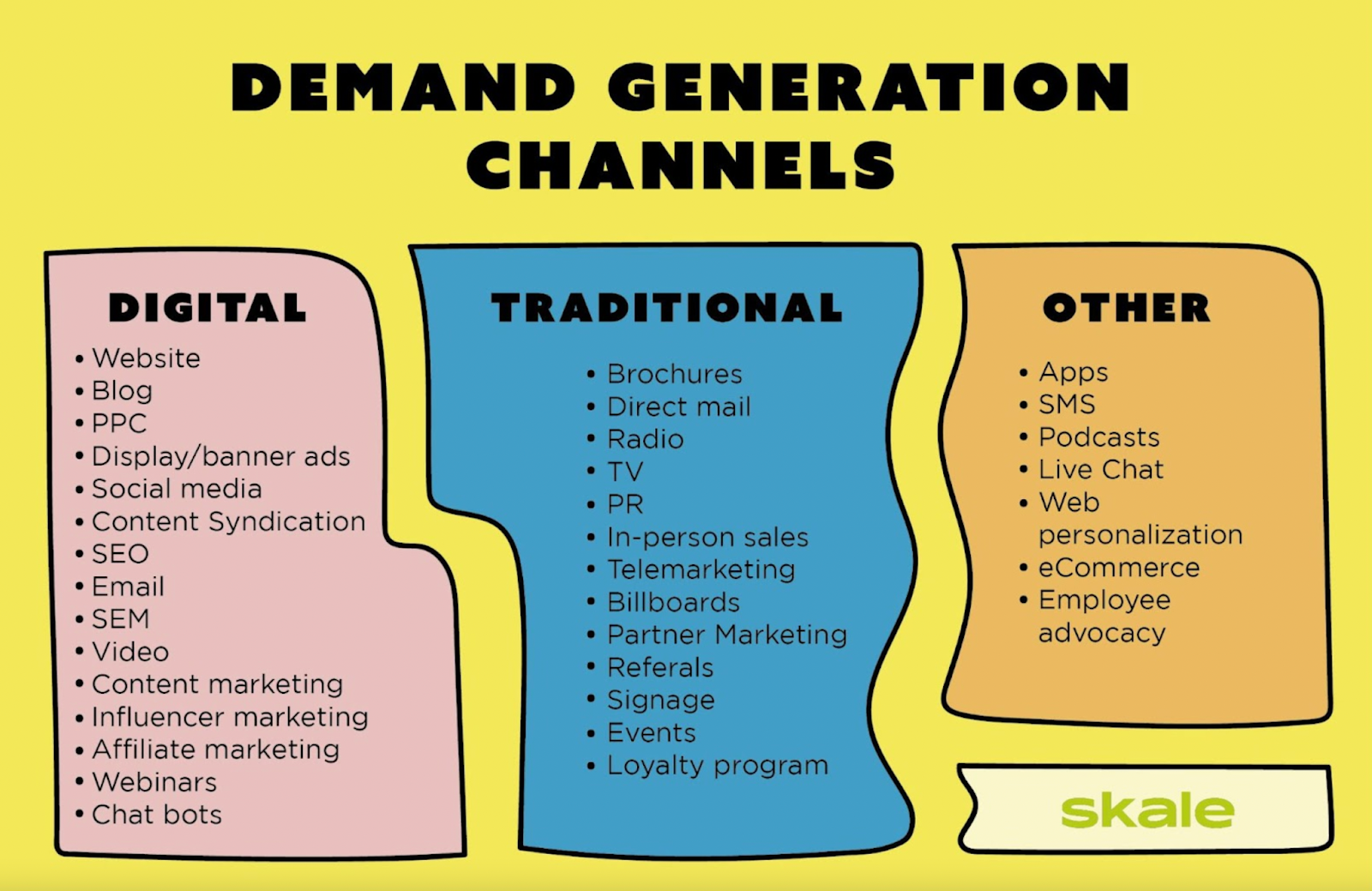Understanding the Difference Between Lead Generation and Demand Generation
The terms “lead generation” and “demand generation” are often used interchangeably, yet they encompass distinctly different strategies. Both are crucial for driving business growth, but understanding their unique roles and functions within a marketing strategy can significantly enhance your campaign’s effectiveness.
Lead generation focuses on cultivating individual prospects and converting them into leads, ideally prepping them for sales interaction. On the other hand, demand generation is about creating a broad awareness and demand for your products or services, setting the stage for these leads to emerge naturally.
This article aims to demystify these two pivotal marketing strategies, helping marketers and businesses both recognize and implement each approach to maximize their market presence and achieve sustainable growth.
Quick Takeaways
- Lead generation specifically targets the acquisition of new leads through direct and measurable tactics, such as targeted advertising and personalized outreach.
- Demand generation encompasses a broader range of activities aimed at building brand awareness and establishing a market presence, thus creating a fertile environment for generating leads over time.
- Integrating lead and demand generation strategies allows businesses to balance short-term sales targets with long-term brand development, enhancing overall marketing effectiveness.
- Regular measurement and optimization of both lead and demand generation activities are crucial for understanding their impact on the sales funnel and adjusting strategies to maximize ROI.
What is Lead Generation?
Lead generation is a targeted approach to marketing, designed to identify and capture the interest of potential customers, converting them into leads that can be nurtured into sales opportunities. It’s the process of engaging individuals through various tactics, encouraging them to share their contact information. Common lead generation strategies include:
- Targeted advertising
- Hosting webinars
- Offering downloadable content (like whitepapers)
- Direct email campaigns
The key to successful lead generation is its focus on the sales funnel’s initial stages. It involves identifying potential customers who have shown interest in your product or service and engaging them through personalized communication.

This can be measured through metrics like conversion rates, which reflect how effectively potential leads are being turned into actual leads ready for further engagement by the sales team.
What is Demand Generation?
Demand generation, on the other hand, is a broader concept that encompasses all the marketing activities aimed at creating demand for your brand, product, or service. This strategy focuses not just on immediate sales but on long-term brand awareness, engagement, and loyalty.
Effective demand generation creates an environment where lead generation can occur more organically and with higher conversion efficiency.
Strategies for demand generation include:
- Comprehensive content marketing
- Search engine optimization (SEO)
- Social media engagement
- Broad-reaching public relations campaigns

These efforts are designed to educate the market, build brand authority, and maintain a consistent presence in the minds of potential customers. Unlike lead generation, the success of demand generation is often measured by longer-term metrics such as engagement rates, follower growth, and ultimately, market share growth.
Comparative Analysis
Understanding the differences between lead generation and demand generation is critical for deploying each strategy effectively.
Lead generation is highly tactical, focusing on converting individuals into leads with a clear intention to purchase. It is primarily concerned with measurable, short-term goals such as the number of leads generated or the conversion rate of specific campaigns. This approach is direct and conversion-oriented, often involving targeted content aimed at eliciting immediate responses.
Demand generation, in contrast, is strategic and holistic, encompassing a wide range of activities that nurture a long-term relationship with potential customers. It seeks to establish credibility and trust, creating a fertile ground for leads to germinate naturally. Demand generation is less about immediate conversions and more about building a robust pipeline for future sales through education, problem-solving content, and brand loyalty initiatives.
The key distinction lies in their impact on the customer journey:
- Lead Generation directly feeds into the sales pipeline, often prompting quick decision-making.
- Demand Generation educates the market, creating a well-informed customer base that recognizes the value of the brand over time.
Integrating Lead and Demand Generation in Your Marketing Strategy
To maximize the effectiveness of your marketing efforts, integrating lead and demand generation strategies is essential. This integration ensures that while you are generating immediate leads for short-term gains, you are also developing a long-term market presence that will sustain your business’s future growth.
Align Content Strategy
Develop content that serves dual purposes—address educational needs for demand generation and include strong calls to action for lead generation. For example, a comprehensive guide on industry best practices (demand gen) can include an invitation to a free consultation (lead gen).
Leverage Multi-Channel Marketing
Utilize various channels like email marketing, social media, and blogs to ensure a cohesive message across all platforms. Tailor the approach depending on whether the goal is to generate demand or capture leads, but maintain a consistent brand voice and message.
Measure and Optimize
Use analytics to measure the success of both strategies. Understand which aspects are driving lead conversions and which are enhancing brand engagement. Regularly adjust tactics based on these insights to improve both immediate and long-term results.
Examples of Integrated Campaigns
Showcase real-life examples where integrated strategies have succeeded. For instance, a campaign might start with a high-level webinar (demand gen) followed by targeted follow-up emails to attendees (lead gen).
By blending these strategies effectively, organizations can not only fill their sales funnel but also create a loyal customer base that will continue to engage with and advocate for their brand.
Maximize Your Marketing Today with Televerde
Understanding and differentiating between lead generation and demand generation is key to a holistic marketing strategy. By integrating both approaches, businesses can effectively convert immediate prospects while building a sustainable brand presence that nurtures future leads. Embrace both strategies to not just meet but exceed your marketing goals by fostering immediate sales opportunities and long-term customer relationships.
Ready to elevate your marketing strategy? Discover how to seamlessly integrate lead and demand generation for sustained business growth. Contact us today to learn more about transforming your marketing approach into a comprehensive, result-oriented framework.


